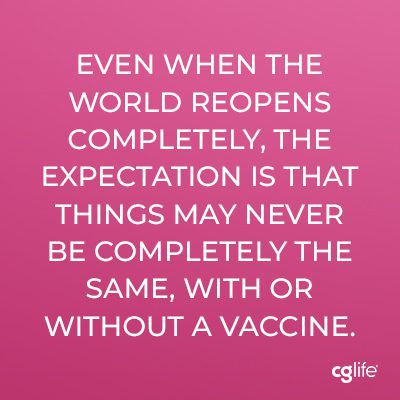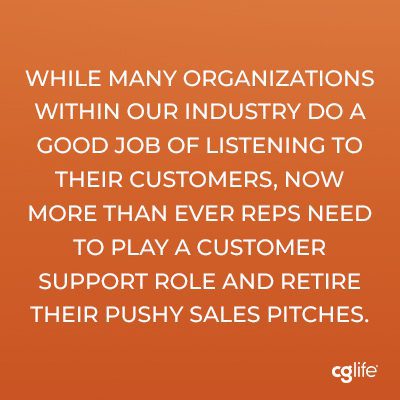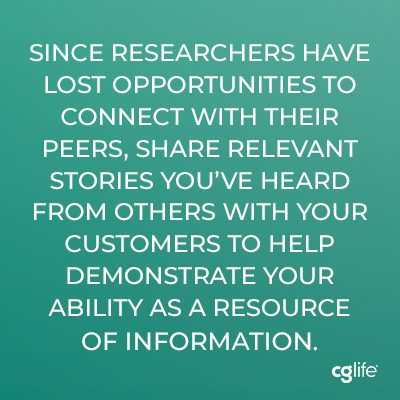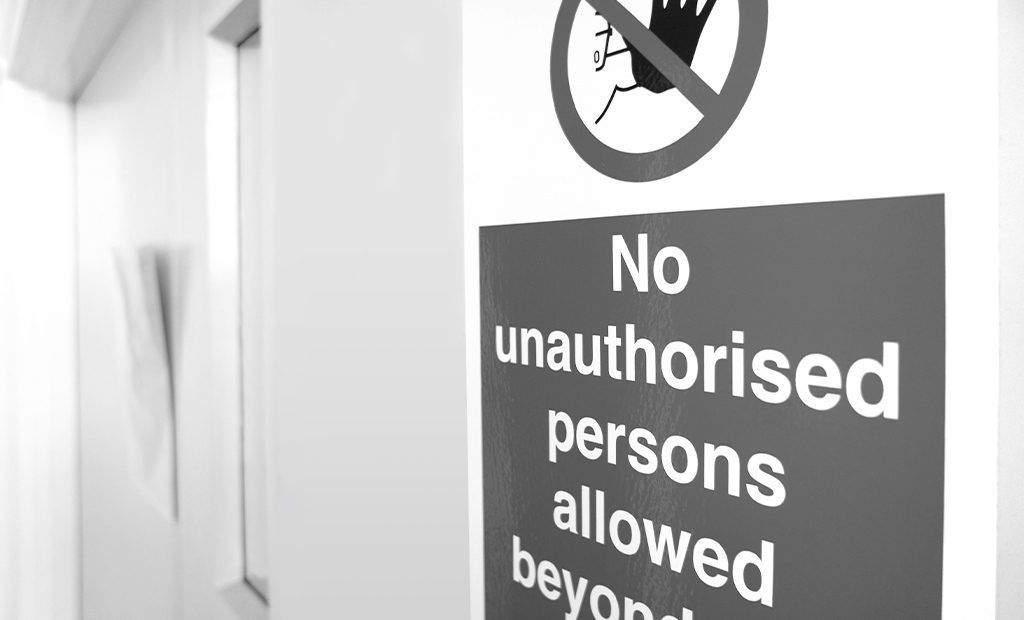Given the many life science and healthcare organizations working to address SARS-CoV-2, there is a temptation to assume that these industries are less affected by the pandemic. While there is some truth to this for certain organizations, our communities are not immune to the virus’s massive impact.

Many research labs, particularly in academia, have closed or significantly scaled back wet lab operations. Naturally, this has led to lost work and setbacks to existing studies that go well beyond the duration of shelter-in-place orders. To this point, many researchers will have to re-establish experimental systems and animal models that may take months to revive. As an example, some researchers have been forced to euthanize their mouse colonies, which are often painstakingly developed to create human-relevant models and take months to generate appropriate numbers for study. Likewise, many healthcare institutions have seen significant decreases in non-COVID patients and reduced non-emergency procedures that are often far more profitable for a hospital. Fortunately, many labs have pivoted their research to help fight against COVID-19 by re-applying their skillsets and knowledge bases in a variety of new ways.
While we at CG Life have talked previously about preparing for economic uncertainty and pivoting marketing strategies, sales efforts are likely to experience a more significant long-term impact.
The more immediate effects are already evident. Labs are closed, patients are waiting things out, and trade shows have gone virtual. All of which, have left life science and healthcare sales reps trying to adjust. The good news is that labs are already re-opening and medical clinics are taking proper precautions to reopen and/or accept more patients safely. However, even when the world reopens completely, the expectation is that things may never be completely the same, with or without a vaccine. To learn more, we sat down with a number of sales managers to hear their predictions for the long-term outlook of their sales efforts. From these discussions, three trends became increasingly clear.
Three Trends in Life Science and Healthcare Sales

1. Limited customer access: One of the best ways to build relationships and trust, meet new prospects, and gain insights about accounts has always been through site visits and face-to-face interactions. The sales professionals we spoke with think this may not ever fully recover. Hospitals and labs alike may choose to not allow visitors back to their institutions. The same is true for application scientists and field service reps.
2. More “saver” mindsets: With the economy reeling and hospitals struggling, now is not the time to make purchases that don’t make immediate impact. This will likely present an even higher threshold for the early adoption of a new technology with open-ended applications, in particular. Survey results project a 10% decrease in spending and a “saver” mindset for the foreseeable future.
3. Demand for support over sales : Right now, there is less appetite for being sold to. While many organizations within our industry do a good job of listening to their customers, now more than ever reps need to play a customer support role and retire their pushy sales pitches.
Three Key Ideas for Adapting Sales Strategies
While this may seem like a tough time to be in sales for lab equipment, reagents, medical devices and supplies, our industry is resilient and will ultimately bounce back. That said, there are some great opportunities for life science and healthcare sales teams to adapt their strategies in order to prepare for our new reality that go beyond becoming a savvy video conference user. Our sales friends again pointed to three key ideas.
1. Be a conduit of information: It is time to really listen to what you customers have to say. Ask more and better questions. What are their unique challenges, and how have things changed? The more you can assist in their recovery and not just push your inventory the better. Since researchers have lost opportunities to connect with their peers, share relevant stories you’ve heard from others with your customers to help demonstrate your fitness as a resource of information.

2. Research the researchers : Don’t just go into a call clueless. Spend your extra time looking up what the researcher has been doing. How have they spent their last few months at home? What are they going to have to do to get the lab restarted? Do you have products that will save them time or money? Remember, you can glean insights from their social media channels or ResearchGate profiles. You can also check preprint servers like BioRxiv, MedRxiv, and ChemRxiv to learn about their most recent research projects and methods.
3. Collude with marketing : The most effective commercial teams are ones where sales and marketing are closely aligned. Make sure to know what campaigns and content are coming (webinars, white papers, advertisements). Leverage your marketing automation software to get a better glimpse into how customers are engaging your brand online and what topics they are interested in. Finally, share your insights and challenges with marketing, so you have the analytics and tools (virtual demos, customer trainings) to be more successful with customers.
The world is changing before our eyes. The organizations who are most nimble and innovative will come out stronger than ever before. We understand how difficult this is, but we believe that learning from others and experimenting with new approaches can help make the most of it!
If you’re looking for more insights to make your sales efforts more effective, check out our piece on what lab purchasers want (and don’t want) from sales teams.
